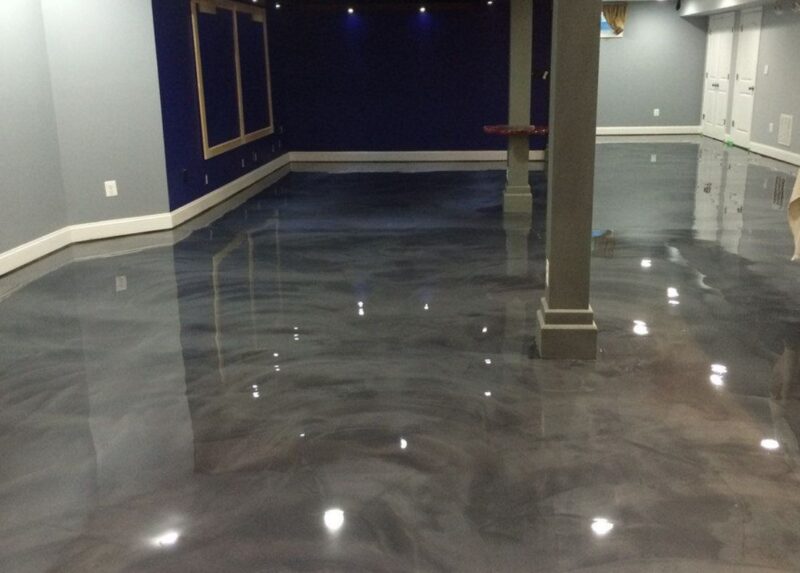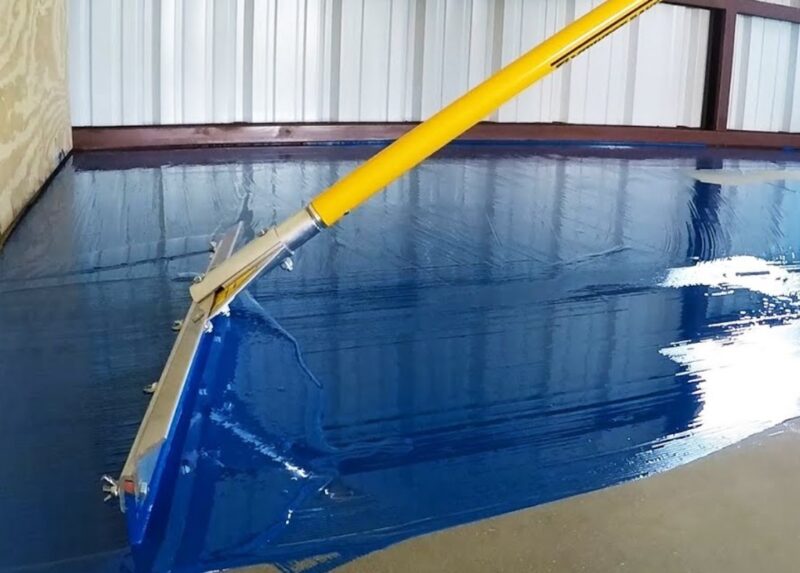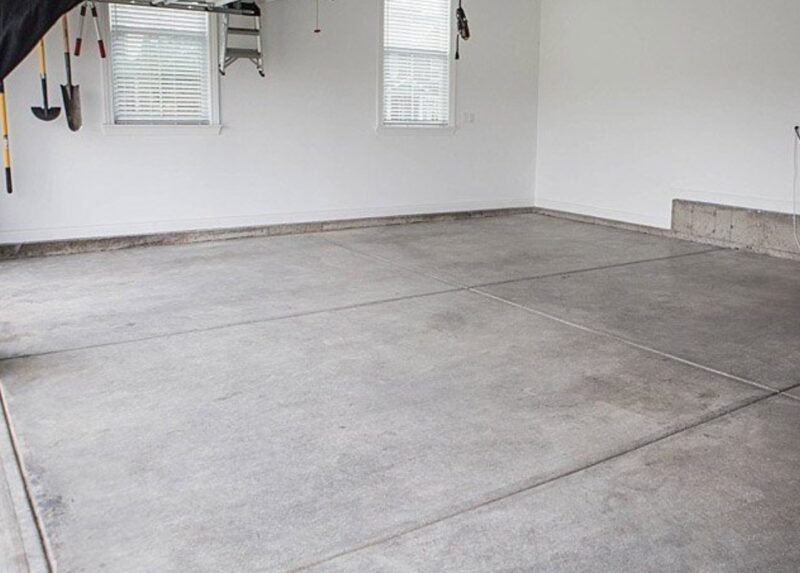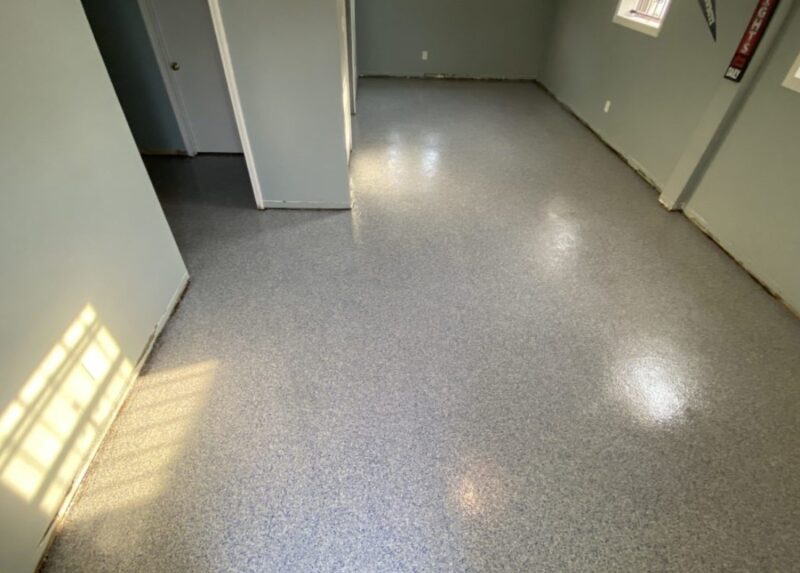Basement flooring is a big decision – on one hand, you have to consider the cost of materials and installation. But if you do decide to epoxy your basement floor, there are pros and cons to consider.
In this article, we’ll take a look at both sides of the argument and help you make the best decision for your home.
What Is Epoxy Flooring and How Does It Work?
Epoxy flooring is a type of flooring that is made up of two main ingredients: epoxy resin and hardener. When these are mixed together, they form a sticky liquid that can be spread over the surface of the floor.
Epoxy resin is typically a thick liquid that is clear or slightly yellow in color. It has a strong, adhesive smell and a slightly sticky feel. Hardener is also a thick liquid but it has a more chemical-like smell. When mixed with epoxy resin, it forms a very strong adhesive that can hold heavy objects together.
Although epoxy flooring is considered to be durable, it does have some disadvantages. First of all, it is not very slip-resistant. This means that if you have wet floors, epoxy flooring may not be the best choice because the adhesive will prevent the floor from escaping from under your shoes.
Another downside to epoxy flooring is that it can be difficult to clean. If something spills on the floor, for example, you may need to use a scrubber to get the adhesive off of the surface. Epoxy floors can also be difficult to repair if they become damaged.
But, besides its disadvantages, epoxy flooring is a good choice because it is very resilient and can last for many years.
Types of Epoxy Flooring

Epoxy flooring is a popular material for basement floors because it is sturdy, water resistant, and easy to clean. However, there are several types of epoxy flooring, so it’s important to know which one is best for your project.
• One type of epoxy flooring is called “hot melt.” This type of epoxy is heated until it becomes liquid, then it is poured onto the surface that will be covered. This type of epoxy is fast and easy to use, but it can be less durable than other types of epoxy flooring.
• Another type of epoxy flooring is called “cold come.” This type of epoxy is poured over the surface that will be covered, then it hardens. This type of epoxy is more durable than hot melt epoxy, but it can be more difficult to work with.
It’s important to choose the right type of epoxy for your project based on the specific needs of your basement floor. Epoxy floor finishing is a popular option for many basement projects because it is durable and easy to maintain. If you’re not sure which type of epoxy flooring to choose, contact a contractor for help.
Pros and Cons of Epoxy Flooring
The pros:
1. Epoxy is a strong and durable material that can resist wear and tear. It is also resistant to staining and easy to clean.
2. Epoxy flooring is available in a variety of colors, so you can choose the perfect color for your home or business.
3. Epoxy is also slip-resistant, making it a great choice for areas where safety is a concern.
The cons:
1. Although epoxy is durable, it is not indestructible. If it becomes damaged, it can be difficult to repair.
2. Epoxy flooring can also be slippery when wet, so it is important to choose a color that will not show dirt and grime easily.
In the end, deciding whether or not to install epoxy flooring in your basement depends on a number of factors, including your specific needs and budget. But whether you choose epoxy or another type of flooring, be sure to consult with a professional first to make sure you choose the right product for your situation.
How to Apply Epoxy Flooring?

1. Remove any paint, varnish, stains, wax, oil, grease, adhesives or sealers from the floor with a floor stripper.
2. Apply a concrete primer to the floor using a roller or brush.
3. Mix the epoxy flooring kit according to the manufacturer’s instructions.
4. Pour the mixed epoxy onto the floor and spread it evenly with a roller or brush.
5. Allow the epoxy to cure for the time specified by the manufacturer.
When to Replace an Epoxy Floor?
The epoxy floor needs to be replaced when it is worn out, cracked, stained and damaged. If the floor is not repaired or maintained on a regular basis, the epoxy floor will start to show its age and will need to be replaced.
How to remove epoxy flooring?

There are a few ways to remove epoxy flooring, but the most common way is to use a power washer. Power washers can be hired from most hardware stores and will make light work of removing the epoxy floor.
Another way to remove epoxy flooring is to use a chemical stripper. Chemical strippers are available from most hardware stores and can be used to remove the epoxy flooring.
Once the epoxy flooring has been removed, the floor will need to be cleaned and prepared before a new floor can be laid.
Final Thoughts on Epoxy for Basement Floors
Epoxy is an excellent adhesive for use on basement floors. The pros of epoxy include its strength and ability to resist moisture, as well as its resistance to wear and tear.
However, there are also some cons to using epoxy for basement floors. One potential issue is that epoxy can be difficult to remove if it becomes embedded in the flooring. Additionally, epoxy can be expensive, and may not be a good option for floors that will be frequently accessed or used.


